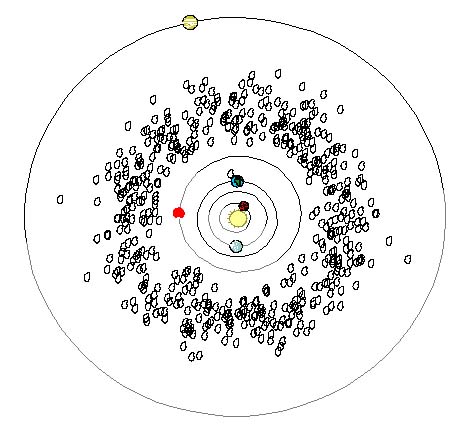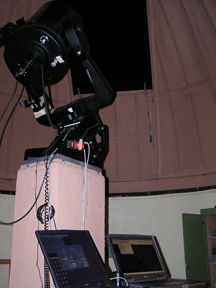Small Observatory Activities |

Most asteroids are in orbits between Jupiter and Mars
|
| The telescope housed in our dome is a 12" Schmidt-Cassegrain that is computer controlled. Before the summer of 2002, students did their work with an 11" Maksutov that had excellent optics but did not possess the effective computer control we now have. The studies of asteroids students have undertaken have occasionally been especially challenging because of the need to obtain a useful set of observations in time to complete a thesis --despite the cloudy skies of central New York. But it's fun! |
 |
At the CHF Peters observatory, laptops are used to control the ccd camera and to point the telescope. |
Jessie McComb ('03), "The Search for Stability: Perturbations in the Orbital Elements of Three Asteroids."
J. Michael Smith ('01), "Limiting magnitude and resolution on a CCD-telescope combination and the resulting precision of asteroid orbital elements."
Sarah Hall ('01), "Micrometeorite collection and analysis -- a link to the extraterrestrial environment." A search for interplanetary dust: the major challenge was to find that component of what was collected that was not terrestrial in origin. We were aided in this search by geologist Dave Bailey and electron microscopist Ken Bart.
Nicole Henderson ('99), "Asteroid observation and analysis."
Matthew Hornbach ('98), "Asteroid orbits: theory and reality."
Spencer Newman ('96), "Star gazing through a computer: a study of noise effects and image formation in a CCD camera."
Kai Peterson ('95), "Reciprocity failure and the effects of pre-exposure on detail enhancement in astrophotography."
|

